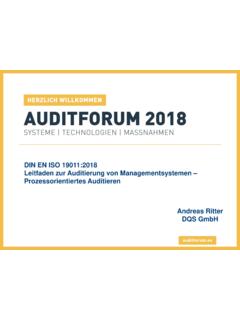Transcription of BIS Working Papers
1 BIS Working Papers No 880 Rise of the central bank digital currencies: drivers, approaches and technologies by Raphael Auer, Giulio Cornelli and Jon Frost Monetary and Economic Department August 2020 JEL classification: E58, G21. Keywords: central bank digital currency, CBDC, central banking, digital currency, digital money, distributed ledger technology, blockchain. BIS Working Papers are written by members of the Monetary and Economic Department of the Bank for International Settlements, and from time to time by other economists, and are published by the Bank. The Papers are on subjects of topical interest and are technical in character.
2 The views expressed in them are those of their authors and not necessarily the views of the BIS. This publication is available on the BIS website ( ). Bank for International Settlements 2020. All rights reserved. Brief excerpts may be reproduced or translated provided the source is stated. ISSN 1020-0959 (print) ISSN 1682-7678 (online) Rise of the CBDCs: drivers, approaches and technologies 1 Rise of the central bank digital currencies: drivers, approaches and technologies Raphael Auer, Giulio Cornelli and Jon Frost Abstract Central bank digital currencies (CBDCs) are receiving more attention than ever before. Yet the motivations for issuance vary across countries, as do the policy approaches and technical designs.
3 We investigate the economic and institutional drivers of CBDC development and take stock of design efforts. We set out a comprehensive database of technical approaches and policy stances on issuance, relying on central bank speeches and technical reports. Most projects are found in digitised economies with a high capacity for innovation. Work on retail CBDCs is more advanced where the informal economy is larger. We next take st ock of the technical design options. More and more central banks are considering retail CBDC architectures in which the CBDC is a direct cash-like claim on the central bank, but where the private sector handles all customer-facing activity.
4 We conclude with an in-depth description of three distinct CBDC approaches by the central banks of China, Sweden and Canada. Keywords: central bank digital currency, CBDC, central banking, digital currency, digital money, distributed ledger technology, blockchain. JEL classifications: E58, G21. The views expressed here are those of the authors and do not necessarily reflect those of the Bank for International Settlements. For comments and input, we thank David Archer, Douglas Arner, Codruta Boar, Harro Boven, Haiwei Cao, Stijn Claessens, Carl-Andreas Claussen, Sebastian Doerr, Umar Faruqui, Leonardo Gambacorta, Philippe Haene, Henry Holden, Martin Hood, Linda Jeng, Taejin Park, Mateo Piccolo, Martin Summer, Tara Rice, Amber Wadsworth, Peter Wierts, Hye-Rim Yoo, Nouran Youssef, Dirk Zetzsche and participants at a BIS research meeting, an Arab Monetary Fund Fintech Working Group meeting and a meeting of the OECD Experts Group on Finance and Digitalisation.
5 We thank Mu Changchun, Lyu Yuan, Scott Hendry, Francisco Rivadeneyra, Dinesh Shah, Gabriela Guibourg, Martin Johansson, Hanna Armelius and Stig Johansson for conversations regarding the CBDC approaches of the People s Bank of China, Bank of Canada and Sveriges Riksbank. Bank for International Settlements (BIS), Cambridge Centre for Alternative Finance (CCAF). Rise of the CBDCs: drivers, approaches and technologies 2 Contents 1. Introduction .. 3 2. Taking stock of CBDC research and development 5 3. The cross-country drivers of CBDC development .. 9 A novel CBDC database .. 10 Examining the cross-country drivers of CBDC projects.
6 11 4. Policy approaches and technical design .. 16 A stocktaking framework: the CBDC Pyramid .. 17 The drivers of technological designs .. 19 5. Approaches for CBDC design: three examples .. 21 PBC: the DC/EP project (pilot stage) .. 22 Riksbank: the e-krona project .. 24 Bank of Canada: CBDC as a contingency plan .. 26 6. Conclusion .. 28 References .. 30 Annex A: data collection for CBDC indicators .. 37 Annex B: overview of CBDC projects .. 39 Rise of the CBDCs: drivers, approaches and technologies 3 1. Introduction Over the centuries, wave after wave of new payment technologies has emerged to meet societal demands. Coins, banknotes, cheques and credit cards were each innovations in their own day (Giannini (2011)).
7 Today, there is growing discussion of a new payment technology: central bank digital currencies (CBDCs). As a digital liability of the central bank, wholesale CBDCs could become a new instrument for settlement between financial institutions, while retail (or general purpose) CBDCs would be a central bank liability accessible to Although the concept of a CBDC was proposed decades ago (ie Tobin (1987)), attitudes about whether central banks should issue them have changed noticeably over the past year. Initially, central banks focused on systemic implications that warranted caution (Barontini and Holden (2019)).
8 But over time, the need to respond to the declining use of cash in some countries came to the fore, and a number of central banks have warmed to the idea of issuing a A tipping point was the announcement of Facebook s Libra and the ensuing public sector response. As of late 2019, central banks representing a fifth of the world s population reported that they were likely to issue CBDCs very soon (Boar et al (2020)). Similarly, the share of central banks (by number) that are likely to issue a retail CBDC over the medium term (in one to six years) doubled in 2019, to 20%. Meanwhile, a full 80% of surveyed central banks are engaging in research, experimentation or development of During the Covid-19 pandemic, social distancing measures, public concerns that cash may transmit the Covid-19 virus and new government-to -person payment schemes have further sped up the shift toward digital payments, and may give a further impetus to CBDC (see Auer et al (2020b)).
9 As a result, CBDCs have seized global attention and feature broadly in central bank communications and public search interest (Graph 1). Still, no major jurisdiction has decided to issue a retail CBDC, and many open questions remain. In the growing literature on CBDCs, discussions centre on several fundamental aspects. One is how central banks should create money and whether CBDCs are desirable in that context (Keister and Sanches (2019), Jackson and Pennacchi (2019), Kim and Kang (2019), Armelius et al (2020a)). Another area is the systemic implications of CBDCs and how to cope with them (Brunnermeier and Niepelt (2019), Fern ndez-Villaverde et al (2020), Kwon et al (2020), Carletti et al (2020)).
10 There is also work on policy design frameworks (Davoodalhosseini and Rivadeneyra (2020), Agur et al (2019), Allen et al (2020)), their implications for cross-country payments (Milkau (2019)), implications for the international role of currencies (Ferrari et al (2020) and legal aspects of their issuance (Hess (2020), Duque (2020), Nabilou (2020), Belke and Beretta (2019)). 1 General purpose and retail are used interchangeably to refer to CBDCs that individuals and non-financial firms could access. For an overview and relevant definitions, see Bech and Garratt (2017) and CPMI and Markets Committee (2018).)












